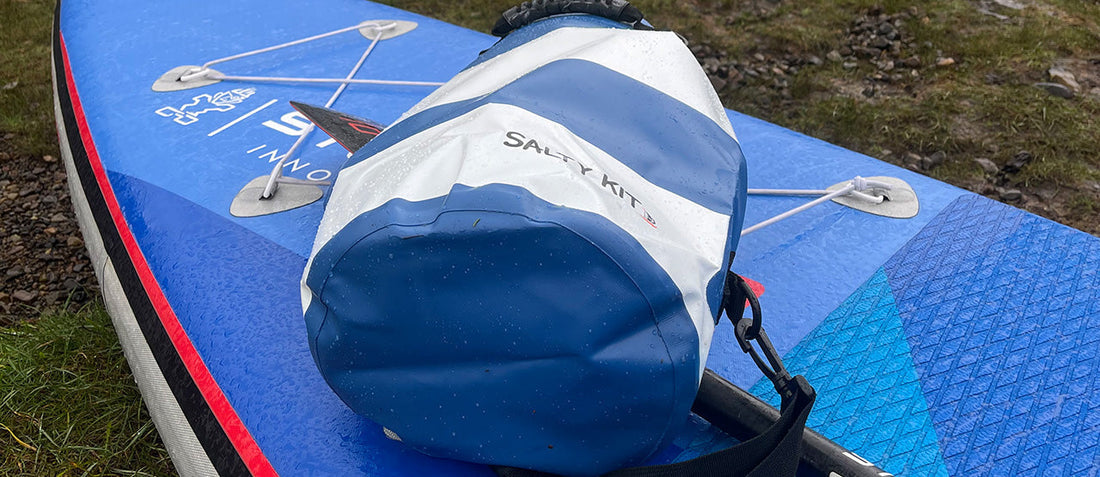
Fantastic review from The Paddler Magazine of the Nautical Look Backpack
Nicola KittoThe first thing you notice about Salty Kit Dry Bags is their colourful design – who hasn’t wanted to break away from standard colours offered as the norm! From classic nautical stripes to a funky watermelon design, there is a bright colour for everyone’s taste.
As a stand-up paddleboarder, my bag has been thrown in at the deep end, quite literally, travelling north to Scotland to be part of an expedition sup course and then more local to be used day to day with my normal paddling and water life.
At 20 litres the bag is the perfect size for a day bag, I could happily fill it with a large box of sandwiches, bottles of water and coats for two people, not forgetting my phone. It has a sturdy handle on the side as well as the fold over top which you can always hang on to. What I love about this kit is the addition of straps to make it into a rucksack, so it can be thrown on your back when you have your board and paddle to carry.
So down to the details: made with 500D PVC tarpaulin with welded seams makes this bag strong and durable and will protect your kit from not only water but sand, dust and dirt.
The bag is a cylindrical shape and when unrolled measures; height 60 cm x width 38 cm x depth 22 cm. The bag is fully waterproof and floats when rolled properly.
It weighs just 550 grams and can be folded pretty small for travelling. The back straps which convert it into a rucksack are extendable and removable too. Alternatively. you can use just one of the straps and wear as a cross body bag. There are five D-rings for all your attachments and a hefty rubber front handle. Really easy to scrub clean too.
I lobbed the bag fully laden into a Scottish loch and it floated beautifully with no leaks. I’d have no hesitation recommending this dry bag – it’s a great size, feels really well made and comes in great funky colours. It’s a very durable piece of kit that will suit more than just water users – a great bag for sports kit in general if you want to keep the water out or even wet kit storage.
Salty Kit is a small independent Cornish brand so it’s great to be able to support a smaller, British-based company.
Price: £29.00
By Sarah Thornely
Read the full review in Paddler Magazine here

